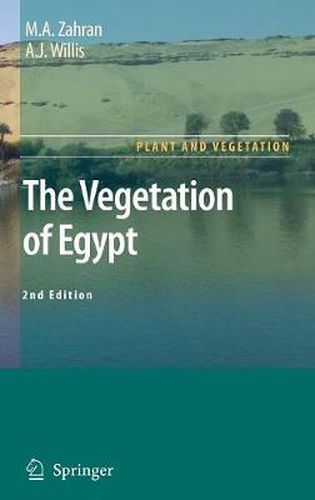Readings Newsletter
Become a Readings Member to make your shopping experience even easier.
Sign in or sign up for free!
You’re not far away from qualifying for FREE standard shipping within Australia
You’ve qualified for FREE standard shipping within Australia
The cart is loading…






This title is printed to order. This book may have been self-published. If so, we cannot guarantee the quality of the content. In the main most books will have gone through the editing process however some may not. We therefore suggest that you be aware of this before ordering this book. If in doubt check either the author or publisher’s details as we are unable to accept any returns unless they are faulty. Please contact us if you have any questions.
This book is an attempt to compile and integrate the information documented by many botanists, both Egyptians and others, about the vegetation of Egypt. The ? rst treatise on the ? ora of Egypt, by Petrus Forsskal, was published in 1775. Records of the Egyptian ? ora made during the Napoleonic expedition to Egypt (1778-1801) were provided by A. R. Delile from 1809 to 1812 (Kassas, 1981). The early beginning of ecological studies of the vegetation of Egypt extended to the mid-nineteenth century. Two traditions may be recognized. The ? rst was general exploration and survey, for which one name is symbolic: Georges-Auguste Schweinfurth (1836-1925), a German scientist and explorer who lived in Egypt from 1863 to 1914. The second tradition was ecophysiological to explain the plant life in the dry desert. The work of G. Volkens (1887) remains a classic on xeroph- ism. These two traditions were maintained and expanded in further phases of e- logical development associated with the establishment of the Egyptian University in 1925 (now the University of Cairo). The ? rst professor of botany was the Swedish Gunnar Tackholm (1925-1929). He died young, and his wife Vivi Tackholm devoted her life to studying the ? ora of Egypt and gave leadership and inspiration to plant taxonomists and plant ecologists in Egypt for some 50 years. She died in 1978. The second professor of botany in Egypt was F. W.
$9.00 standard shipping within Australia
FREE standard shipping within Australia for orders over $100.00
Express & International shipping calculated at checkout
This title is printed to order. This book may have been self-published. If so, we cannot guarantee the quality of the content. In the main most books will have gone through the editing process however some may not. We therefore suggest that you be aware of this before ordering this book. If in doubt check either the author or publisher’s details as we are unable to accept any returns unless they are faulty. Please contact us if you have any questions.
This book is an attempt to compile and integrate the information documented by many botanists, both Egyptians and others, about the vegetation of Egypt. The ? rst treatise on the ? ora of Egypt, by Petrus Forsskal, was published in 1775. Records of the Egyptian ? ora made during the Napoleonic expedition to Egypt (1778-1801) were provided by A. R. Delile from 1809 to 1812 (Kassas, 1981). The early beginning of ecological studies of the vegetation of Egypt extended to the mid-nineteenth century. Two traditions may be recognized. The ? rst was general exploration and survey, for which one name is symbolic: Georges-Auguste Schweinfurth (1836-1925), a German scientist and explorer who lived in Egypt from 1863 to 1914. The second tradition was ecophysiological to explain the plant life in the dry desert. The work of G. Volkens (1887) remains a classic on xeroph- ism. These two traditions were maintained and expanded in further phases of e- logical development associated with the establishment of the Egyptian University in 1925 (now the University of Cairo). The ? rst professor of botany was the Swedish Gunnar Tackholm (1925-1929). He died young, and his wife Vivi Tackholm devoted her life to studying the ? ora of Egypt and gave leadership and inspiration to plant taxonomists and plant ecologists in Egypt for some 50 years. She died in 1978. The second professor of botany in Egypt was F. W.